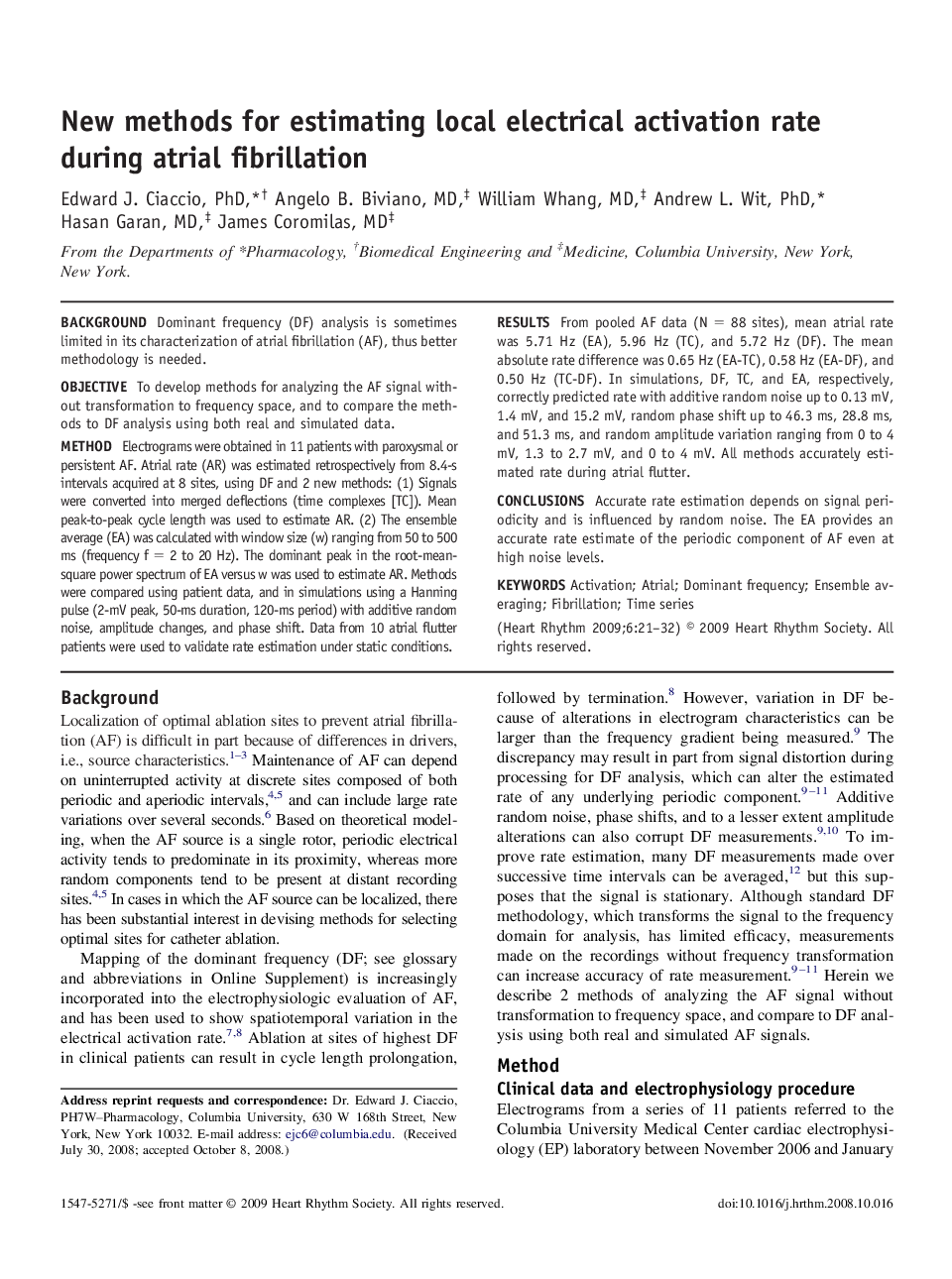| کد مقاله | کد نشریه | سال انتشار | مقاله انگلیسی | نسخه تمام متن |
|---|---|---|---|---|
| 2924047 | 1175893 | 2009 | 12 صفحه PDF | دانلود رایگان |

BackgroundDominant frequency (DF) analysis is sometimes limited in its characterization of atrial fibrillation (AF), thus better methodology is needed.ObjectiveTo develop methods for analyzing the AF signal without transformation to frequency space, and to compare the methods to DF analysis using both real and simulated data.MethodElectrograms were obtained in 11 patients with paroxysmal or persistent AF. Atrial rate (AR) was estimated retrospectively from 8.4-s intervals acquired at 8 sites, using DF and 2 new methods: (1) Signals were converted into merged deflections (time complexes [TC]). Mean peak-to-peak cycle length was used to estimate AR. (2) The ensemble average (EA) was calculated with window size (w) ranging from 50 to 500 ms (frequency f = 2 to 20 Hz). The dominant peak in the root-mean-square power spectrum of EA versus w was used to estimate AR. Methods were compared using patient data, and in simulations using a Hanning pulse (2-mV peak, 50-ms duration, 120-ms period) with additive random noise, amplitude changes, and phase shift. Data from 10 atrial flutter patients were used to validate rate estimation under static conditions.ResultsFrom pooled AF data (N = 88 sites), mean atrial rate was 5.71 Hz (EA), 5.96 Hz (TC), and 5.72 Hz (DF). The mean absolute rate difference was 0.65 Hz (EA-TC), 0.58 Hz (EA-DF), and 0.50 Hz (TC-DF). In simulations, DF, TC, and EA, respectively, correctly predicted rate with additive random noise up to 0.13 mV, 1.4 mV, and 15.2 mV, random phase shift up to 46.3 ms, 28.8 ms, and 51.3 ms, and random amplitude variation ranging from 0 to 4 mV, 1.3 to 2.7 mV, and 0 to 4 mV. All methods accurately estimated rate during atrial flutter.ConclusionsAccurate rate estimation depends on signal periodicity and is influenced by random noise. The EA provides an accurate rate estimate of the periodic component of AF even at high noise levels.
Journal: Heart Rhythm - Volume 6, Issue 1, January 2009, Pages 21–32